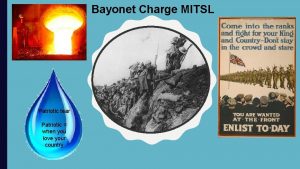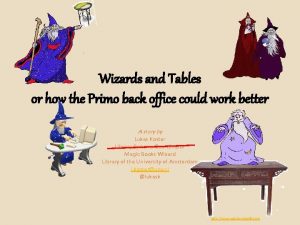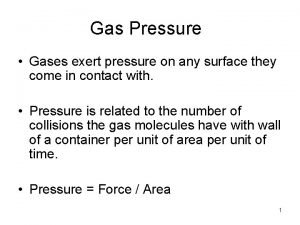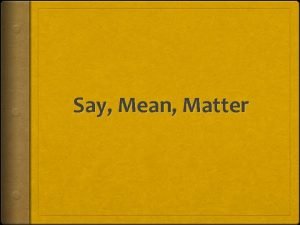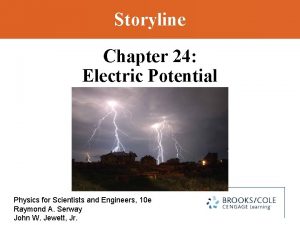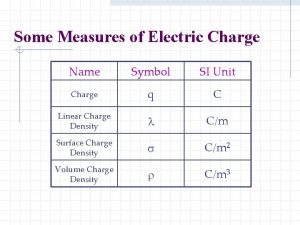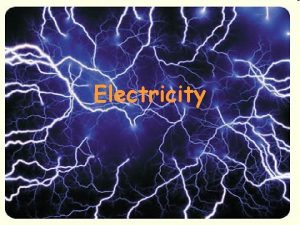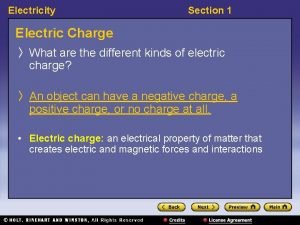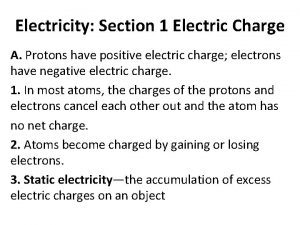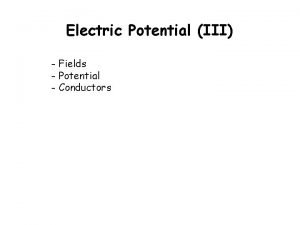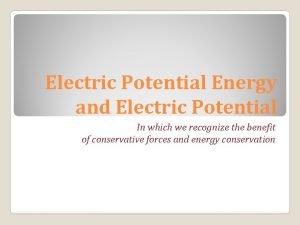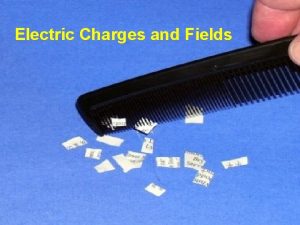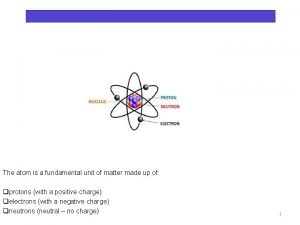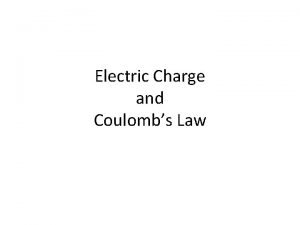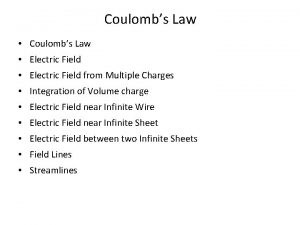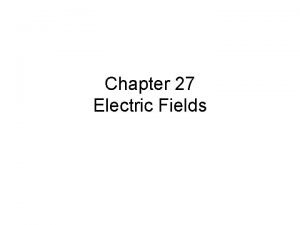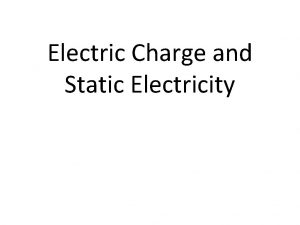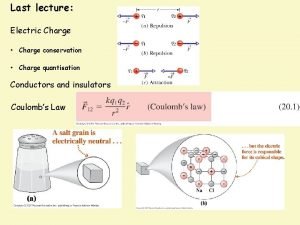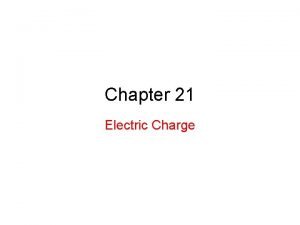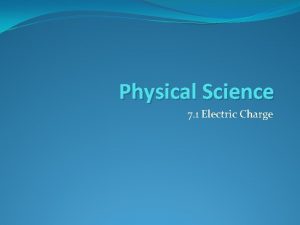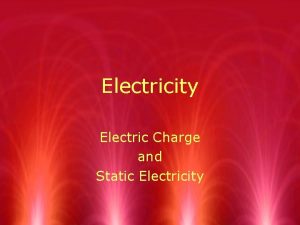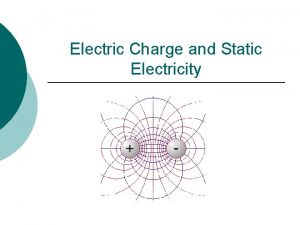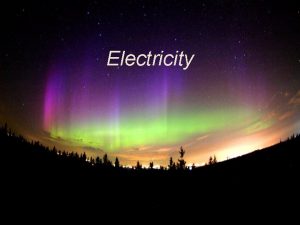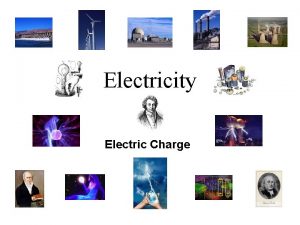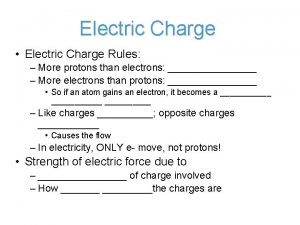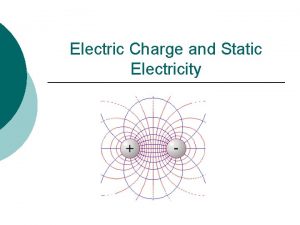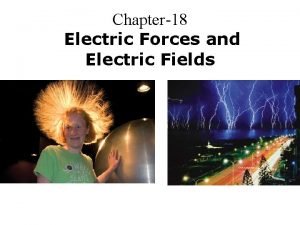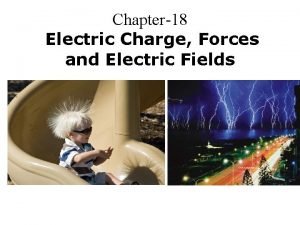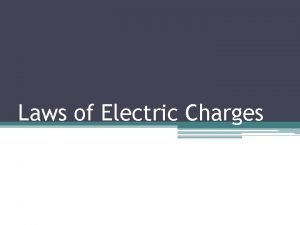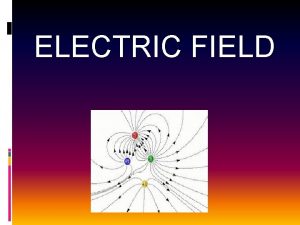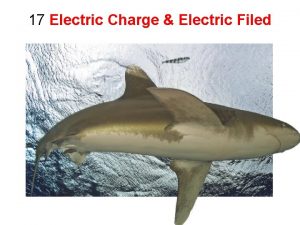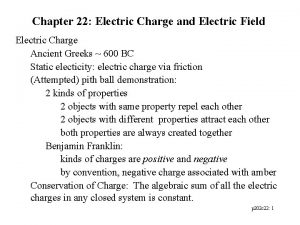ELECTRIC CHARGE What does exert mean Exert simply


























- Slides: 26

ELECTRIC CHARGE

What does exert mean? Exert simply means to apply or use.

DEFINE FORCE? A FORCE IS A PUSH OR A

HAVE YOU EVER REACHED OUT TO OPEN A DOOR AND RECEIVED A SHOCK FROM THE DOORKNOB? In order to understand why this happens, you have to understand electric charges.

EVERYTHING IN OUR UNIVERSE IS MADE UP OF MATTER The substance or substances of which any physical object consist or is composed Yes, the table and chair you sit at is made up of matter. Yes, the computer you are reading from is made up of matter. Yes, you are made up of matter.

ALL MATTER IS MADE UP OF VERY SMALL PARTICLES atoms CALLED ______

even smaller particles called ____________ Protons, Neutrons, Electron ___

PROTONS AND NEUTRONS MAKE UP THE CENTER OF THE ATOM, THE NUCLEUS. ELECTRONS ARE FOUND OUTSIDE THE NUCLEUS.

PROTONS AND ELECTRONS ARE CHARGED PARTICLES, AND NEUTRONS ARE NOT. PROTONS = POSITIVE (+) ELECTRONS = NEGATIVE (-) NEUTRONS = NO CHARGE (0)

CHARGE IS A PHYSICAL PROPERTY An object can have a positive charge, a negative charge, or no charge.

CHARGED OBJECTS EXERT A FORCE – A PUSH OR A PULL – ON OTHER CHARGED OBJECTS.

CHARGES EXERT FORCES

OBJECTS THAT HAVE THE SAME CHARGE REPEL EACH OTHER. Each object exerts a force on the other object. These forces push the objects apart.

OBJECTS THAT HAVE OPPOSITE CHARGES ARE ATTRACTED TO EACH OTHER. Each object exerts a force on the other object. These forces pull the objects together.


IN ATOMS, PROTONS ARE POSITIVELY CHARGED. ELECTRONS ARE NEGATIVELY CHARGED. Because protons and electrons have opposite charges, they are attracted to each other. Without this attraction, electrons would fly away from the nucleus of an atom.

ATTRACT OR REPEL ACTIVITY

THE FORCE BETWEEN (THE GAP) CHARGED OBJECTS IS AN ELECTRIC FORCE Electric Force The greater the charges are, the greater the electric force is between objects. The closer together the charges are, the greater the electric force is between objects.

CHARGED THINGS HAVE AN ELECTRIC FIELD AROUND THEM. A charged object in the electric field of another charged object is attracted or repelled by the electric force acting on it.

Electricity is simply the Electric presence and/or Field Charge flow of electric charges. Electric Force

ATOMS HAVE EQUAL NUMBERS OF PROTONS AND ELECTRONS. BECAUSE AN ATOM’S POSITIVE AND NEGATIVE CHARGES CANCEL EACH OTHER OUT, ATOMS DO NOT HAVE A CHARGE. So, how can anything made of atoms be charged?

AN OBJECT BECOMES POSITIVELY CHARGED WHEN IT LOSES ELECTRONS. An object becomes negatively charged when it gains electrons.

WHEN TRYING TO UNDERSTAND THE TRANSFER OF ELECTRONS, THINK OF A CHALK BOARD AND ERASER. HOW MIGHT THIS ILLUSTRATE ELECTRON TRANSFER? The eraser represents a negatively charged object, the chalk particles represent electrons, and the (clean) board represents an uncharged object. When the board is wiped by the eraser, there is an “electron trail” that the chalk leaves behind.

ELECTRICAL CHARGES WORKSHEET

ELECTRICAL CHARGES WORKSHEET – CUT 3 AND PASTE INTO JOURNAL

REVIEW OF BIG CONCEPTS: • Like charges repel and opposite charges attract. • The size of the electric force between two objects depends on the size of the charges exerting the force and the distance between the objects. • Charged objects exert a force on each other and can cause each other to move.
 Difference between charge and electric charge
Difference between charge and electric charge Difference between charge and electric charge
Difference between charge and electric charge Chapter 21 electric charge and electric field
Chapter 21 electric charge and electric field Chapter 21 electric charge and electric field
Chapter 21 electric charge and electric field Coulombs units
Coulombs units Units of a charge
Units of a charge Patriotic tear meaning
Patriotic tear meaning One does not simply walk into mordor
One does not simply walk into mordor How does a gas exert pressure
How does a gas exert pressure How to find the mad
How to find the mad What does mean mean
What does mean mean Say mean matter definition
Say mean matter definition Electric field of a finite line charge
Electric field of a finite line charge What is the symbol of surface charge density called
What is the symbol of surface charge density called What is electric charge measured in
What is electric charge measured in Coloumb to volt
Coloumb to volt Section 1 electric charge crossword puzzle answers
Section 1 electric charge crossword puzzle answers Section 1 electric charge crossword puzzle answers
Section 1 electric charge crossword puzzle answers Example of charge by contact
Example of charge by contact Electric field of a finite line charge
Electric field of a finite line charge Electrical potential energy
Electrical potential energy Amber electric charge
Amber electric charge Charge of proton
Charge of proton Coulomb's law: statement
Coulomb's law: statement Electric field for infinite line charge
Electric field for infinite line charge Chapter 6 electricity section 1 electric charge answers
Chapter 6 electricity section 1 electric charge answers Electric field formula
Electric field formula






